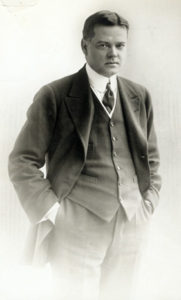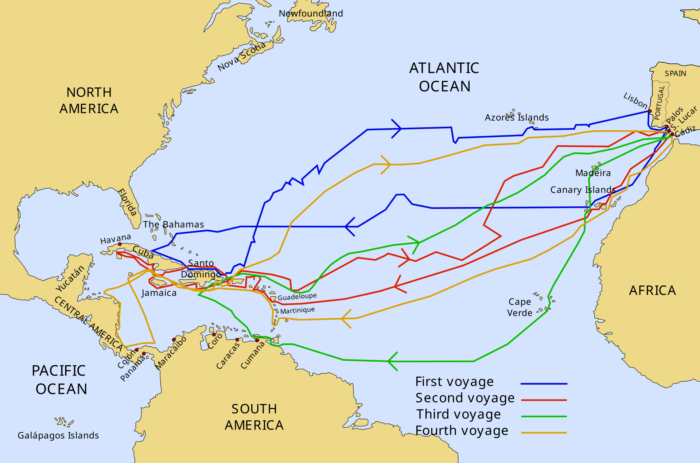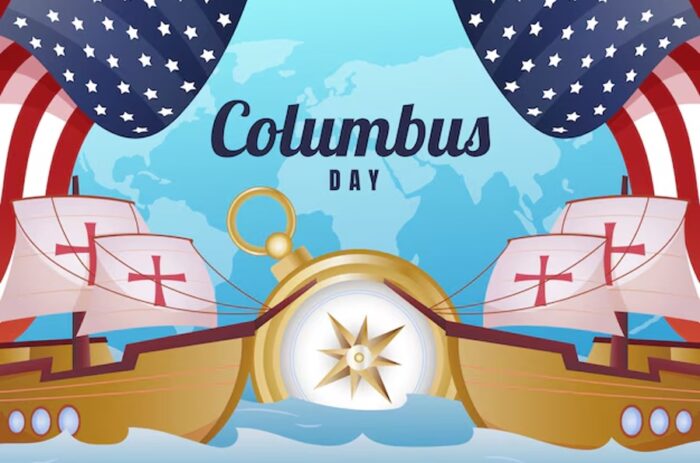print Print...
(by Jeff Lipkes, AmericanThinker.com) – In October 1914, over 5 million Belgians faced starvation. The German Army had invaded on August 4 and swept across the country in three weeks. …The Kaiser’s [German emperor] troops executed over 5,500 Belgians, women and children as well as men, though there was no civilian resistance to the invasion. Over 2 million refugees fled to Holland, France, and Britain. The Germans requisitioned all grain, flour, livestock, fruit, and vegetables. They seized the railroads, canals, all motor vehicles, and telegraph and telephone lines, and removed machinery from factories. The economy collapsed. The British naval blockade made the situation desperate, as Belgium imported nearly 78% of its food.
America stepped into the breach. A taciturn [reserved; quiet] mining engineer living in London, Herbert Hoover, had just raised money from other [American] businessmen to help American tourists stranded in Europe by the war. He was contacted by a fellow engineer working in Brussels whose effort to ship 1,500 tons of food had been thwarted by the blockade. Hoover said he would see what he could do, and the Committee for Relief in Belgium [CRB] was born.
Though most of the British Cabinet, including Winston Churchill, opposed the project — either fearing that the Germans would confiscate shipments or hoping to see food riots in Brussels, with Germany forced to divert troops and supplies — the government approved it, after a menacing letter from the forty-year-old Hoover to the prime minister. Berlin promised not to seize the shipments. The Germans were relieved at not having to deal with the crisis and, like the British, valued public opinion in the U.S. Food and clothing shipped to Belgium were legally the personal property of the American minister, Brand Whitlock. …
A humanitarian effort on this scale had never been undertaken before. By the time it wrapped up operations, the CRB had shipped about 5.2 million tons of food and clothing to Belgium and northern France, worth more than $806 million (over $17.5 billion today). The CRB operated a fleet of nineteen vessels and leased many others, along with 300 canal boats to bring the food down the Meuse from Rotterdam, where it rented docks. Food was distributed from its 240 warehouses. Americans donated over $34.5 million of the $52.3 million the organization raised from individuals and foundations. (The U.S. government contributed $387 million more.) The work was organized by amateurs — the first fifteen volunteers were Rhodes Scholars — without the benefit of e-mail, faxes, transatlantic phone calls, Facebook pages, etc.
The success of the CRB owed everything to Hoover’s indomitable will. “Terrible to the Germans,” wrote the secretary of war, “terrible to the British and French, terrible to most of his American associates, terrible because of his relentless and unconquerable determination to keep the Belgians from starving … he squeezed money out of stones and gathered food from the deserts.” But “the Chief” was revered by the 169 young men who served under him. And he was worshiped by the Belgians. They “have come to look upon the Americans as their sole saviors,” he wrote. Hoover seldom visited the bread lines and soup kitchens because he would be overcome by emotion. On one occasion when he did, he recalled, “The children were sitting down to their meal, and when they saw me they rose and feebly sang the first stanza of ‘The Star Spangled Banner.'”
Never heard of the CRB? Not surprising. It’s not mentioned in any of the eight college U.S. history texts I consulted. All are among the top fifteen assigned in the country, based on syllabi posted online at syllabusfinder.com.
Maybe the authors felt they had to devote all their allotted space to describing the American contribution to the war itself. Not exactly. The historians are more interested in repression at home than in the campaign overseas. The texts devote a total of 36 paragraphs to the operations of the U.S. Navy and the AEF, conditions in the trenches, etc. Fifty-one paragraphs provide background on the draft, training, Pershing, etc. But the suppression of dissent is detailed in 87 paragraphs. The “Red Scare” following the Bolshevik takeover in Russia gets an additional 63 paragraphs.
Students are misinformed about the origins of the war as well. The inaccurate overviews are particularly deplorable, given the importance of the casus belli [reasons for going to war] in the eventual American decision to join in. Two of the books place the blame on Serbia, the victim of Austrian aggression.
What about when Hoover is described? Surely a sketch of the 31st president would start off with his accomplishments in Belgium. Only three of the texts…mention that he organized food relief during the war, before being appointed director of the Food Administration in D.C., responsible for increasing output and reducing consumption. Another notes his “reputation for compassion,” only to observe that it was tarnished by his response to the Great Depression. The evil that men do lives after them; the good is often interred with their bones. So let it be with Hoover.
For good measure, Hoover led the campaign to rebuild the famous library of Leuven University, the Oxford of Belgium, burned to the ground by the Germans on the night of August 25, 1914. Plaques on its walls honor the 260 American colleges and universities that donated money, and the handsome building, with an American eagle on its balustrade, sits on Herbert Hooverplein. No mention of this, of course.
In September 1915, in response to the alarming reports of the U.S. ambassador in Constantinople, the American Committee for Armenian and Syrian Relief was formed. It raised $7 million (over $153 million today) to help the survivors of the massacres who had managed to reach territory captured by the British Army or Russian Armenia. The organization, renamed the Near Eastern Relief [NER] after the war, then raised $30 million (about $658 million) when Hoover took over. The total was nearly $100 million ($2.2 billion) by the time the NER closed its doors in 1929. Catastrophes overwhelmed the relief workers: the Russians withdrew from the Caucuses after the Soviet coup; the independent Armenian state was overthrown; and massacres resumed in Cilicia, on Turkey’s west coast, when the French precipitously pulled out, and then in Ionia after the defeat of the Greek Army. But the NER still managed to save the lives of hundreds of thousands.
In 1921, some 30 million Russians in the Volga region and the Ukraine faced starvation. Americans once again stepped in. It was the country’s own Bolshevik government that had seized grain in this case, compounding the ravages of civil war and drought. At the height of the famine, the American Relief Administration, the successor to the CRB, fed over 10.5 million Russians a day, delivering over 740,000 tons of food and supplies at a cost of $52 million ($1.14 billion today). The Soviet government contributed $11 million. Over five million people died of starvation nonetheless, many while Lenin waited three months before approving the American aid. In the worst famine in tsarist Russia, between 400 and 500,000 people had died. …
Neither the Armenian nor Russian relief efforts are mentioned in any of the texts. The treatment of the Soviet Union is scandalous. The “Red Scare” is covered in detail, but little hint is given in any of the texts as to what people might have been scared of.
Historians expect that students will share their amusement that sauerkraut was renamed “liberty cabbage” and their indignation that Eugene Debs was jailed. But when Americans sacrifice to save the lives of millions of strangers overseas, this is not considered significant enough to devote a sentence to. The omission is more egregious: most texts have lavish special features on subjects of interest to the authors, taking up a full page or two (“Cindy Sheehan and the War in Iraq”).
According to [the author of the school textbook “A People’s History”] Howard Zinn, “America has probably done more harm than good in its history.” Most bona fide scholars among American historians find Zinn’s cartoon history an embarrassment. A People’s History is the primary text in only 1.2% of the syllabi. Nonetheless, one has to conclude that textbook authors, some of the best-known American historians in the country, if they don’t share Zinn’s belief, are more than willing to suppress evidence to the contrary. It is terribly gauche (so to speak) to praise America.
This article was first posted at AmericanThinker.com on November 24, 2011. Reprinted here February 23, 2012 for educational purposes only. Contact Jeff Lipkes at: jeff@jefflipkes.com for a list of the textbooks and a complete bibliography. Jeff writes: “Most texts are revised each year, for the profit of publisher and authors, and I did not consult current editions. But no recent work has been done on the CRB or the ARA. In fact, apart from volume 2 of conservative historian George Nash’s biography of Hoover, there is no book devoted to the Belgian relief campaign other than those written by participants.”
Questions
1. This is a very challenging article. Even if you don’t understand every detail, you should be able to understand the main idea. What do you think is the main idea of Jeff Lipkes commentary?
2. How does Mr. Lipkes feel about the U.S.?
Resources
Visit the Herbert Hoover Presidential Library and Museum website at: hoover.archives.gov/exhibits/collections/flour%20sacks/index.html



